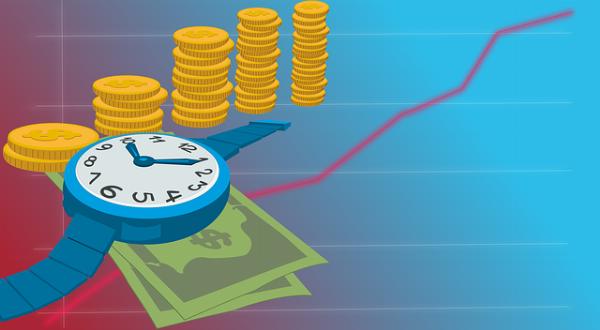Early Withdrawal of Fixed Deposits: What You Need to Know

Strong 8k brings an ultra-HD IPTV experience to your living room and your pocket.
Fixed deposits (FDs) are popular investment instruments that offer guaranteed returns by locking in your funds for a set period. However, sometimes life throws unexpected financial needs your way, prompting the question: what happens when you withdraw an FD before its maturity?
This guide explores the implications of premature FD withdrawal, including penalties, tax liabilities, and how it can affect your financial standing.
What Is Premature Withdrawal of Fixed Deposit?
When opening a fixed deposit, you agree to park a lump sum for a particular duration based on the chosen payout frequency and interest rate. In exchange for locking funds in an FD, you gain assured returns. But life’s uncertainties mean financial needs can crop up at any time. Premature FD withdrawal refers to breaking the fixed deposit midway before its maturity date and tenure completion.
Financial institutions allow premature closures but levy penalties as you break the agreed investment commitment. The longer the tenure remaining, the steeper the penalties.
The Consequences of Early Withdrawal: Why FD Maturity Matters
Breaking open FDs prematurely has several financial implications that you must weigh carefully before deciding.
Penalties and Charges
Financial institutions levy heavy penalty fees for premature withdrawals to deter investors from frequently breaking FDs. The penalty typically ranges from 0.5% to 3% of the interest rate, depending on the remaining tenure. The longer the remaining tenure, the steeper the penalty.
Financial institutions also charge small admin fees for early closure processing, so the fixed deposit breaking charges apply twofold.
Tax Implications
Premature withdrawal also attracts increased tax liability compared to FDs closed after maturity. Financial institutions will club the cumulative interest paid out previously with your principal amount.
Sum as this whole becomes taxable income for that financial year. So your tax outgo rises drastically compared to if the interest was split and taxed over the entire tenure.
Effect on Interest Earned
The third impact is losing out on potential interest income from compounding had the FD remained invested for its designated duration. Interest keeps compounding over tenure, increasing the FD exponentially the longer the tenure.
Shortening this compounding period curtails the overall interest accrued by maturity. 5-year FDs gain substantially higher interest through compounding than 2-year FDs.
Impact on Future Loan Eligibility
Lastly, financial institutions see premature FD withdrawals and closure as risky financial behavior. If you frequently break FDs before maturity, this reflects financial instability.
Too many broken FDs can hurt your credit profile and make financial institutions more hesitant to extend loans, seeing you as a higher risk.
How to Avoid the Penalty on Premature Withdrawal of FDs
Given the downsides of premature withdrawals, thoughtful financial planning is prudent to avoid needing access to locked FDs.
1. FD Laddering
An optimal approach is FD laddering, i.e. spreading funds across multiple FDs with staggered maturity timelines. For instance, you could split 1 lakh rupees into 4 FDs:
- 25k in 1-year FD
- 25k in 2-year FD
- 25k in 3-year FD
- 25k in 5-year FD
This ensures some portion of funds matures each year. If an urgent need arises in year 2, you can break the 1-year FD that has matured instead of the longer tenure FDs. The penalty on small 1-year FDs is substantially lower.
2. Loan Against FDs
Another method is to take out loans against existing FDs when funds are needed instead of withdrawing FDs. Financial institutions offer loans up to 75-90% of FD value at favourable interest rates, about 2% lower than other loans. You can repay the loan once the original FD matures.
3. Contingency Fund
Finally, building an emergency corpus to handle medical urgencies, income losses, or unforeseen expenses protects locked investments. Break into contingency funds to meet short-term needs rather than locked FDs.
Conclusion
Fixed deposit investors must note that premature withdrawals come at the cost of income loss, tax burden, and lowered bank trust while allowed. Hence, it is wise to assess liquidity needs before locking funds. Proper financial planning to handle contingencies also prevents the need for early FD closure.
FAQs
1. Do banks allow partial withdrawal of FDs?
Yes, most banks allow partial breaking FDs instead of fully closing them. This limits penalties and allows the remaining FD amount to keep earning interest.
2. Do tax benefits get reversed on premature FD withdrawal?
Yes, tax benefits claimed earlier under Sec 80C are revoked if tax-saver FDs are withdrawn within five years. Interest income is also clubbed and taxed.
3. Can I withdraw from FD without losing interest?
No, withdrawing it before the FD minimum period invariably results in a loss of interest income. However, partial closure over complete withdrawal limits the overall interest penalty.
4. Does premature closure of FD affect credit score?
Frequent or back-to-back FD withdrawals can hurt your credit profile, signalling risky financial behaviour or lack of stability. This can limit loan eligibility.
5. Are interest rates higher on longer-tenure FDs?
Yes, interest rates directly depend on the chosen FD tenure. Longer terms, like five years, offer 0.5 to 1% higher returns than short 1-2 years FDs.
Note: IndiBlogHub features both user-submitted and editorial content. We do not verify third-party contributions. Read our Disclaimer and Privacy Policyfor details.








